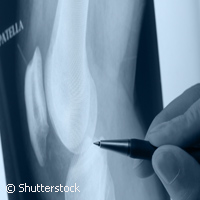Study calls for better post-fracture care in Russia
A growing number of people in the Russian Federation are dying or being left severely disabled because of the poor state of post-fracture care in the region, a new research study from the International Osteoporosis Foundation (IOF) reveals. The study also warns that the problem will likely get worse with Russia poised to experience a significantly increased ageing population that will be at greater risk of contracting the brittle bone disease osteoporosis. Presented at the IOF Summit of Eastern European and Central Asian Osteoporosis Patient Societies in St Petersburg, Russia on 27 September, the research highlights that while in Western Europe most hip fracture patients receive the optimal standard of care, in the Russian Federation there is an extremely low rate of surgical treatment. The researchers point out that although older people who sustain a hip fracture worldwide are at increased risk of death and suffer long-term disability, this problem is far more severe in the Russia Federation and in some eastern European countries. Consequently, there is a worryingly high mortality rate in these regions after a hip fracture, reaching up to 45%-52% during the first year in some Russian cities. Of the surviving hip fracture patients, 33% remain bed-ridden and 42% are capable of only very limited activities. Only 9% are able to return to the same level of daily activity as they had before their fracture. 'There is an urgent need for healthcare providers to improve post-hip fracture surgical care,' said Professor Olga Lesnyak, Vice-President of the Russian Association of Osteoporosis and author of the report. Osteoporosis, a bone disease that leaves people at increased risk of fracture, is most common in older people. Population projections for the majority of countries in the region predict a significant increase in the percentage of people aged 50 and over within the next 40 years. It should be noted that a decrease is anticipated for the total population. The number of osteoporosis sufferers in Russia alone is expected to rise by a third by 2050. Despite the major public health burden of osteoporosis-related fractures, the disease suffers from severe under recognition, according to the researchers, who cite the lack of solid epidemiological and economic data as the key reasons why health authorities remain unconvinced of the urgency of osteoporosis prevention. 'It is clear from the findings that governments need to support wide-scale epidemiological studies to collect data on the incidence of osteoporotic fractures,' says IOF President John Kanis. The study notes that DXA (dual energy X-ray absorptiometry) technology, which provides the most accurate method of diagnosis, is usually only accessible in main cities; yet in about one third of the countries examined, more than 40% of the population lives in a rural area. Moreover, in most countries, drug treatment for those at high risk of fracture is not, or is only partially, reimbursed, effectively making treatment unaffordable for the majority of citizens. Low levels of calcium and vitamin D intake impact negatively on bone health, say the researchers, highlighting that the average daily calcium intake in nearly all the countries studied falls far below World Health Organization (WHO) recommendations, and that most people in these regions have severe vitamin D insufficiency. 'Wider and more equitable access to diagnostic tests and appropriate medication are required to stem the growing tide of fractures in the region,' explains IOF Chief Operating Officer Judy Stenmark. The finalised report, Eastern European & Central Asian Regional Audit - Epidemiology, Costs & Burden of Osteoporosis in 2010, will be published in November 2010 on the IOF's website. It will include projections and data for 21 countries including Armenia, Azerbaijan, Belarus, Bulgaria, the Czech Republic, Estonia, Georgia, Hungary, Kazakhstan, Kyrgyzstan, Latvia, Lithuania, Moldova, Poland, Romania, Slovakia, Slovenia, Russia, Tajikistan, Ukraine and Uzbekistan.
Countries
Armenia, Azerbaijan, Bulgaria, Belarus, Czechia, Estonia, Georgia, Hungary, Kyrgyzstan, Kazakhstan, Lithuania, Latvia, Moldova, Poland, Romania, Russia, Slovenia, Slovakia, Tajikistan, Ukraine, Uzbekistan



